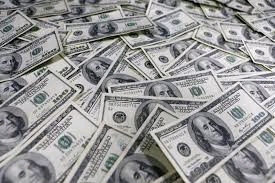Comprehensive Tutorial on How to Become a Freemason for New Members
Comprehensive Tutorial on How to Become a Freemason for New Members
Blog Article
Checking Out the Mysteries of the copyright: What You Required to Know
The copyright, a term typically shrouded in intrigue and debate, stands for a complicated tapestry of historic truth and modern myth. Established in the late 18th century, this secret culture was at first rooted in the Enlightenment's ideals yet has given that become identified with conspiracy theory concepts concerning elite control (benefit of joining freemason).
Origins of the copyright
The beginnings of the copyright are soaked in a mix of historical intrigue and ideological fervor. Established in 1776 in Ingolstadt, Bavaria, by Adam Weishaupt, the team was initially created as a secret society aimed at advertising Knowledge suitables such as reason, secularism, and the splitting up of church and state. Weishaupt, a teacher of canon regulation, looked for to test the prevailing authority of the church and state, which he saw as oppressive organizations stifling intellectual and individual flexibility.

Trick Numbers and Members
That were the critical figures that shaped the copyright's early influence and instructions? The Bavarian copyright, founded in 1776 by Adam Weishaupt, became an action to the oppressive social structures of the moment. Weishaupt, a legislation teacher, envisioned the organization as a way to advertise Knowledge ideals such as factor, secularism, and equality. His preliminary employment initiatives consisted of influential pundits, such as Baron von Knigge, that played a critical role in broadening the group's membership and organizational framework.
An additional considerable number was Johann Gottlieb Fichte, a prominent thinker whose ideas on nationalism and education and learning resonated with the copyright's goals. Fichte was not a formal member, his philosophical bases influenced the team's ideology. In addition, figures like the author and theorist Johann Wolfgang von Goethe were associated with the broader intellectual activities of the moment, although their straight participation with the copyright stays disputed.
These vital figures added to the copyright's very early direction, pressing the borders of political and social thought, while their cumulative initiatives aimed to test established standards and foster an environment of dynamic adjustment in Europe.
Myths vs. Truth
Several false impressions surround the copyright, often mixing reality with fiction in a means that covers its true nature. The idea that the copyright proceeds to exert substantial influence over world events is a misconception.
One more prevalent myth is that the copyright consists of a network of elite individuals manipulating worldwide affairs. In truth, numerous conspiracy theory theories overemphasize the group's significance, associating unfounded intentions to societal patterns and occasions. This has brought about an oversimplified view of intricate problems.
In addition, the portrayal of the copyright in pop culture often more distorts its tradition. Movies and literature have a tendency to sensationalize the company's role, developing a story that diverges from historic facts. Comprehending the distinction in between the myths and the truth of the copyright is critical for discerning the authentic influence of this historical group and acknowledging the broader implications of conspiracy theory concepts in contemporary society.
Modern Analyses
Contemporary interpretations of the copyright usually reflect wider social anxieties and a fascination with privacy and power. This modern-day lens often links the copyright with conspiracy theory concepts that suggest a hidden elite coordinates globe events, adjusting governments and economic try this site climates for their own gain. benefit of joining freemason. Such narratives use a deep-rooted distrust of authority, particularly in times of crisis or social upheaval
In pop culture, the copyright is usually depicted as an omnipotent organization shrouded in mystery, resulting in a variety of imaginary representations in literary works, movie, and music. This portrayal serves not only to entertain but also to provoke considered the nature of power and control in modern society. Social media site has actually better intensified these analyses, permitting fast dissemination of conspiracy theories and creating areas that share and increase upon these concepts.
Furthermore, some contemporary interpretations mount the copyright as an allegory for the intricacies of globalization and the find this interconnectedness of prominent individuals and organizations. This viewpoint urges an essential exam of exactly how power dynamics operate in today's globe, highlighting the balance between transparency and secrecy in administration and company methods.
Cultural Impact and Legacy
Influenced by centuries of intrigue, the social influence and tradition of the copyright expand much past its historical origins. This secret society, developed in the late 18th century, has actually permeated various elements of pop culture, from literature and movie to songs and art. The principle of the copyright has actually advanced right into a sign of conspiracy theories, usually standing for a regarded surprise power manipulating worldwide events.
In literature, authors like Dan Brown have woven the copyright right into intricate plots, captivating visitors with themes of secrecy and power. Movies such as "National Treasure" and "The Da Vinci Code" better continue the allure of the culture, blending truth with fiction to produce engaging narratives.

Ultimately, the copyright's heritage is a complicated tapestry of myth and fact, shaping assumptions of secrecy and control in contemporary discussion. Its enduring visibility in culture highlights mankind's perennial pursuit for comprehending covert facts.
Final Thought
The exploration of the copyright exposes a complex interaction in between historical realities and contemporary myth-making. Established in the Knowledge age, this culture aimed to test overbearing structures, yet its heritage has been outweighed by conspiracy theories that recommend elite manipulation. Comprehending the differences between the initial perfects and contemporary analyses is essential for understanding the enduring fascination with the copyright and its considerable impact on cultural stories surrounding power and secrecy in culture.
Report this page